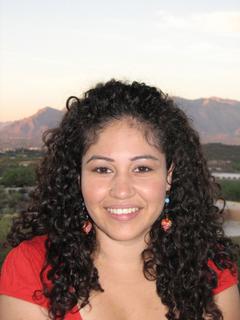Sharayah JimenezI grew up in the Sonoran Desert of the American Southwest, hearing stories of a place, that exists now only in memories. In the downtown area of Tucson, Arizona, there was a barrio, or neighborhood, called El Hoyo, meaning “the hollow”, because of the way the ground sloped down from Main Avenue to the riverbed below. The people who resided in this neighborhood were primarily Mexican-American and poor, but their ethic of resourcefulness created not just buildings that responded to the environment, but an entire sustainable community. The homes were made of almost nothing; my ancestors took the ground below them and they made it into bricks that held on to the morning cool of summer and afternoon warm of winter. And when bricks would not make a roof, they would dig through the nearby dump yard and give a second life to discarded lumber, turning it into a shelter overhead. The outdoor areas, whether surrounding the house, or in courtyards, were used as living spaces. The yards were planted with fruit trees and vegetable gardens that supplemented the family diet while also creating cool microclimates that helped ventilate the interior spaces. As a collective, the homes occupied a small, dense urban grid that had narrow streets, partially shaded by building mass, providing relief from the harsh desert sun. Within walking distance of the homes, Main Avenue provided all of the necessities for living, a baker, a barber, a market store, and many other conveniences. Sadly, this community was erased during the urban renewal movements of the 1960’s. But what if the principles of the architecture; the compactness, the thermal performance, the use of recycled materials, and those with a low-impact building life cycle, could be revived and used in combination with modern technologies? For example, combining the efficiency of adobe with solar energy and water harvesting might create buildings that are completely off the grid. And what if these individual buildings were arranged in a way that encouraged walking and biking, because of nearness to work, school, and other amenities? The results could be incredible; a building method might be achieved that has minimal impact on the environment, while also addressing the larger social need for walkable streets and a sense of public life and community vitality. In this way, the tradition of this barrio lifestyle might be honored, and revived, while also taking advantage of the lessons of today. Designing for the future cannot just be about buildings in isolation, urban design must be a part of the equation in order to encourage an entire way of life that is sustainable. This is especially critical in the desert southwest because places like Arizona, Nevada and California are growing at unprecedented rates. Managing this growth is the challenge for the future, but by learning from the lessons of this lost neighborhood, perhaps a new future can be created that is based on sustainable principles. Additional Help and InformationAre you in need of assistance? Please email info@berkeleyprize.org. |
|

